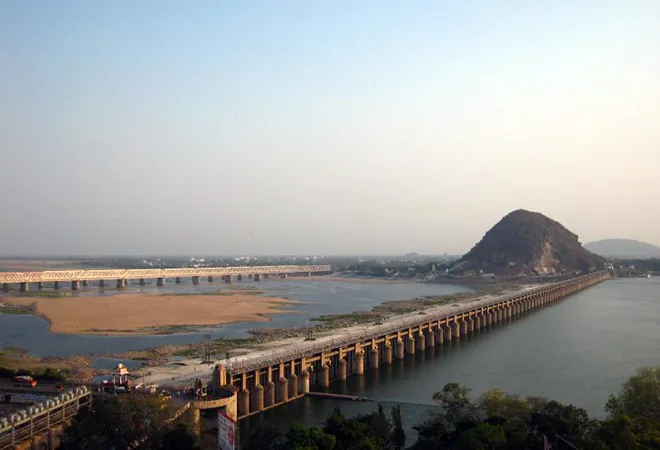Water conflicts in India often result from wrong delineation of the food security policy. The Green Revolution in the late 1960s, introduction of minimum support price (MSP) mechanism in the late 1970s, and government procurement policies through the Food Corporation of India (FCI) limited food security to the production and procurement of two major foodgrains: rice and wheat.
MSP matters
The spur for higher yield during the Green Revolution led to an increase in MSPs at a higher rate than that of the less water-consuming millets. MSP was supposed to act like the ‘put option’ in finance — if prices fall below the MSP there is an option of selling rice or wheat at the MSP to FCI. This cushion led to a ready market even during overproduction. Over time. MSP became the ‘floor’ price-setter for rice and wheat, implying that whenever MSPs for rice and wheat were increased by the Commission for Agricultural Costs and Prices (CACP), the traders put across a higher bid, increasing the market price for rice and wheat.
MSP procurement tilted the terms- of-trade (the ratio of prices of two competing crops) substantially in favour of rice and wheat.
Farmers’ acreage decisions weighed in favour of water-consuming staples, instead of ragi and sorgum, which require around 10-20 per cent of the water required by paddy.
In many parts of India — the Krishna and Cauvery basins or in the Upper Ganges in Uttarakhand and Uttar Pradesh— irrigated wheat and/or paddy became the dominant crop during the non-monsoon summer months, and became the third crop of the cropping year. Since monsoons did not play a part in their irrigation, this phenomenon substantially increased the demand for ground and surface water. Agricultural economists often argue that irrigation in India is largely groundwater-dependent. This is partially true.
Groundwater is getting depleted in large parts, creating pressure on surface flows. However, it is often forgotten that groundwater feeds and sustains the surface flows. In large parts of south India, prevalent canal irrigation takes a heavy toll on surface flows. The Cauvery basin (a thorny issue between Karnataka and Tamil Nadu) witnessed a massive increase in agricultural area for summer paddy in the 1990s.
This happened mostly in the Karnataka part of the basin by almost 25 per cent. Karnataka is a late-starter in irrigation development in the basin.
Thirsty crops
Karnataka brought more land under agriculture to augment water supply. From the 1980s, favorable terms-of- trade incentivised the increase in favour of paddy compared to ragj. This is also true for the Haryana-Punjab water conflicts where high-yielding variety crops increased the demand for water, and the Bangladesh-India water conflicts over the Teesta river, where acreage of summer paddy has increased extensively. The ‘agricultural economic’ perspective supported by ‘reductionist engineering’ — water management through large irrigation projects — has accentuated water conflicts because of a misplaced vision of “food security.” It is not sustainable, since conflicts as social stressors impose a massive social cost. The definition of food security in India lacks a broader ecosystem dimension. While the inextricable link between ecosystem and food security is increasingly being recognised in academics, they are not acknowledged by India's food policy or water governance policy. Strands of academic literature state that water and food security need not have a linear relation. Several best-practice-mechanisms of water management delink the two variables.
The scarcity mindset
In large parts of South Asia, agricultural expansion has caused widespread changes, degrading the ecosystems and restricting its ability to support some critical services such as food provisioning. Extensive use erf fertilisers and pesticides that impair the natural soil fertility in Punjab, Haryana, Uttar Pradesh, Andhra Pradesh. Karnataka, and Tamil Nadu have challenged the ecological foundation of the food system.
Large construction impedes the sediment-carrying capacity of rivers which affects natural soil formation function. The Cauvery Water Tribunal's 2007 award reflects this non-ecosystemic perspective. It reserved the “quantity ... for environmental protection" and “quantity determined for inevitable escapades to the sea” as 10 thousand million cubic feet (Tmc ft) and 4 Tmc ft, respectively.
These categories do not recognise the impacts on the basin ecosystem and economy in the long run. This has aggravated the Cauvery water conflict. The ecosystem must be discussed in contested claims for shared waters, which can happen through a holistic food security policy, which is missing presently.
This commentary originally appeared in Mail Today.
The views expressed above belong to the author(s). ORF research and analyses now available on Telegram! Click here to access our curated content — blogs, longforms and interviews.




 PREV
PREV


